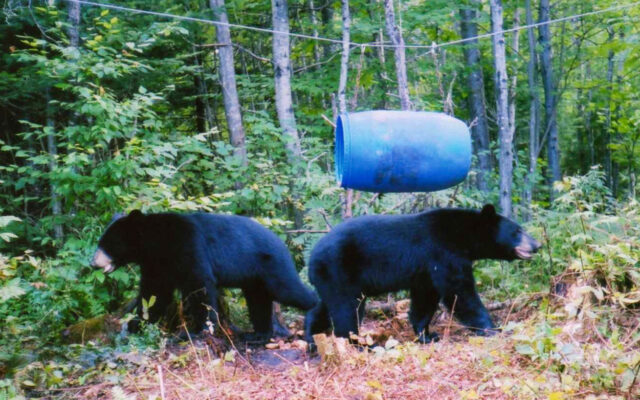
Bear hunting in Maine is growing in popularity
By Pete Warner, Bangor Daily News Staff
More people hunted black bears in Maine again this year and the result was another sizable harvest.
While the final numbers are not in, the Maine Department of Inland Fisheries and Wildlife has thus far electronically accounted for 3,758 bears taken by all methods of hunting during 2022.
It marks the third consecutive year in which hunters shot more than 3,750 bears, a trend that coincides with an increase in the number of bear hunting permits issued by the state that appears to have been sparked by the COVID-19 pandemic. The year-to-date total for 2022 is approaching 13,600 permits, a 33 percent increase since 2019, when 10,255 permits were sold.
“There’s a strong correlation between our harvest and the number of bear permits we sold,” said Jennifer Vashon, black bear and Canada lynx biologist for DIF&W. “And with the pandemic, we’ve seen an increase in permit sales.”
There was an 18 percent rise in permit sales in 2020 after the onset of the pandemic. The resulting harvest of 3,883 was the fifth highest on record.
Vashon said while natural food availability for bears is the biggest factor affecting hunter success, increased participation helps explain the consistently high harvest numbers over the last three years.
Preliminary data show that the average bear harvest during the last three years has been 30 percent higher than the previous seven seasons. Hunters killed 3,779 bears in 2021 and 3,883 in 2020.
The record harvest of 3,951 bears came in 2000. The most permits ever issued in a single year was in 2002, when 15,227 hunters received them.
In Maine, bears may be hunted by baiting, dogs and trapping, with the remainder taken by spot-and-stalk tactics or incidental harvests during the regular firearms season for deer.
Biologists expected good hunter success this year because dry conditions in parts of the state have limited the availability of the bears’ natural food. Less food on the landscape means more bears are attracted to bait sites and trapping locations in September.
“I would have expected a higher bait harvest this year, but it’s looking similar to last year,” Vashon said.
In contrast, 2021 was a good year for bears to find natural food, which normally might mean a tougher time for bait hunters. Instead, the increase in the number of hunters tempered the negative effects and kept the harvest numbers robust.
“That is likely what’s played a role, more than anything else, is permit sales,” Vashon said of the recent consistent hunter success.
The state does not limit the number of permits sold for bear hunting as it does with moose and antlerless deer.
More than 90 percent of bears harvested in Maine are taken by either baiting (66 percent) or with hounds (25 percent). In 2021, some 68 percent of bears were shot using a Registered Maine Guide.
Vashon also expects the state’s final tally will show that, for the third straight year, a record number of people purchased permits to trap bears. However, the increase has not resulted in a large bump in the number of bears harvested by trapping, which hovers around 6 to 8 percent of the total.
“Trapping is increasing, particularly among residents,” Vashon said, noting that Mainers account for 90 percent of those permits.
DIF&W this year is rolling out a new population model, using more data and better tools, that should provide a better estimate of how many black bears there are in Maine. The number, believed to be 26,000 to 30,000, is characterized as “stable to increasing.”
The new model will help the department refine its population estimate and contemplate any changes that might be needed to stabilize its growth. The target harvest range is 10 to 15 percent annually.
“We’ll be watching it closely,” Vashon said.